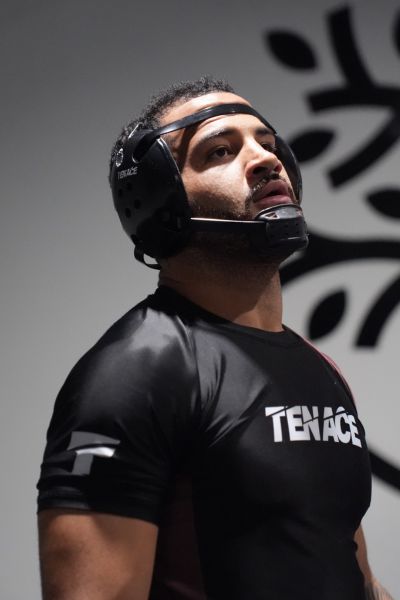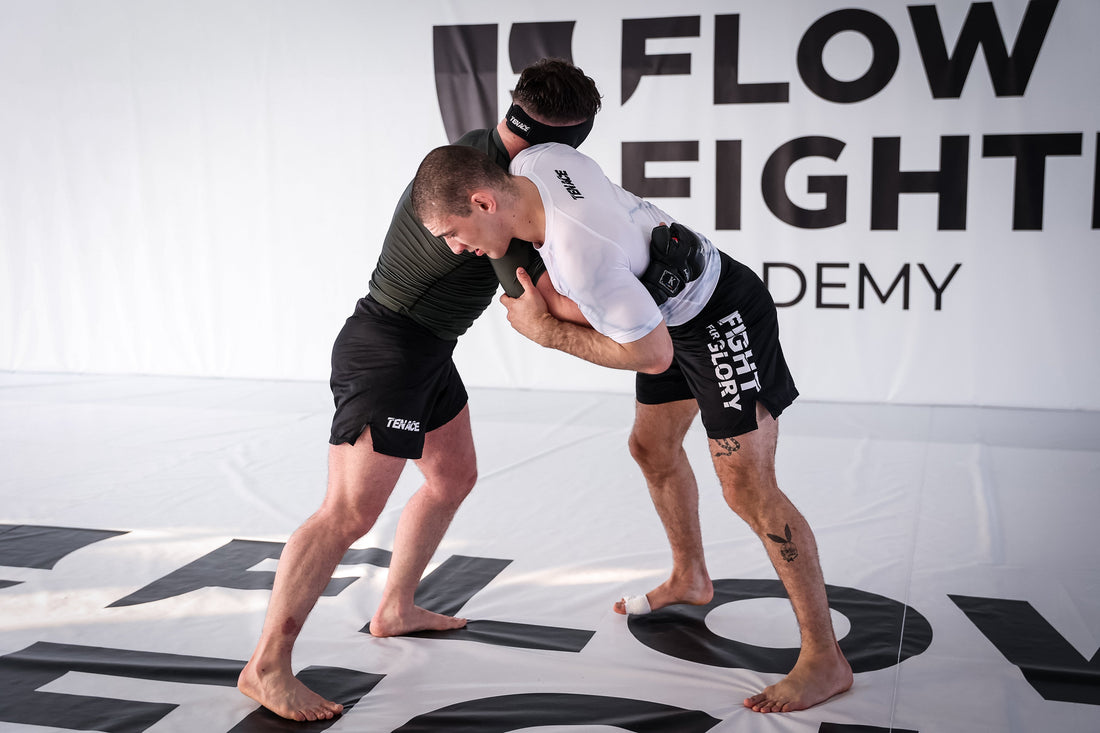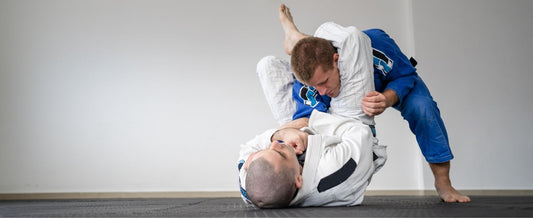Index:
1. Grappling or BJJ for the street?
2. What is really needed in a street fight?
3. Comparison: What does BJJ contribute?
4. Is BJJ useful in a real-life situation?
5. What is often NOT trained… and should be
6. Experts talk about this
7. Conclusion: Combine the two?
💬 "BJJ is useless because it's just ground."
💬 "There's more than one person on the street, you're not going to lock onto someone with three guys on top of you."
💬 "If you fall to the ground, you're lost."
💬 "It's better to box or kick than to go to the ground."
These statements have some truth , but they are also incomplete. We'll see why in this article.
1. Grappling vs Brazilian Jiu Jitsu: Which is more effective in a street fight?
In this article we give you a clear comparison, based on real experience and professional analysis , of two of the most popular disciplines today: Grappling and Brazilian Jiu Jitsu (BJJ) .
We'll discuss the importance of self-defense, avoiding common mistakes, and understanding which system best prepares you for a street situation.
BJJ or Grappling?
With the rise of combat sports and the increase in risky situations on the street, more and more people are looking for a system that is not only sporty , but truly functional in real-life scenarios .
And here the great debate begins:
“Is BJJ useful on the street or is it better to train pure grappling?”
The answer isn't that simple. It depends on the approach, how you train... and understanding what really happens in a fight off the mat.
Grappling and BJJ: Are they the same thing?
Not exactly. Although they share many techniques and fundamentals, there are key differences:
| Feature | BJJ (Brazilian Jiu Jitsu) | Grappling |
|---|---|---|
| Main focus | Ground fighting, control and submissions | Clinch, takedowns and control without a kimono |
| Equipment | Gi (kimono), although No-Gi exists | No-Gi (sportswear, sometimes for wrestling) |
| Aim | Control and subdue | Control and score (or submit, depending on the discipline) |
| In self-defense | High utility if trained with a realistic approach | Very useful in clinch, takedown and control |
2. What do you need in a real defense situation?
In a street fight, there are NO rules. There are no points. There are no referees.
What you need is:
- Quickly neutralize threats.
- Avoid serious injuries (yours and the other person's, if possible).
- Control the attacker until you can escape.
- Be prepared for surprises (hits, multiple attackers, weapons).
And for that, both BJJ and Grappling can be powerful tools, as long as they are trained with a self-defense approach .
3. Which one works better on the street?
What Brazilian Jiu Jitsu brings:
- Ability to control from the ground: On the street, many fights end on the ground. If you master this phase, you have an advantage.
- Non-lethal finishes: BJJ allows you to control or put your attacker to sleep without breaking a bone. This is key to avoiding legal issues later.
- Progressive approach: ideal if you are smaller, less strong, or just starting out in training.
💬 Common opinion:
"BJJ was created for self-defense. If you know jiu jitsu, you can defend yourself against anyone."
This is true only if you train with a realistic approach, not if you just do sports guards or drills without pressure.
What Grappling (wrestling, sambo, wrestling, etc.) brings:
- Explosive Takedowns: On the street, avoiding being hit is crucial. Grappling teaches you how to close the distance and control your opponent from above.
- Control without submission: You can keep the attacker on the ground without having to submit him.
- Increased physical endurance: This is a very demanding discipline, which improves your ability to react in real-life stressful situations.
💬 Common opinion:
“On the street you don’t want to go to the ground, that’s why grappling is better.”
That's also true... but what if the ground finds you? What if you get knocked down or slip?
4. Is Brazilian Jiu Jitsu useful on the street?
Real self-defense vs. combat sport
Yes, BJJ can be useful in a real-life self-defense situation... but with nuances . Not everything practiced on the mat translates directly to the street, and understanding those differences is key.
What advantages does Jiu Jitsu offer on the street?
1. Control of the opponent without hitting
In many street situations (bar fights, out-of-control arguments, attempted physical assault), you don't want to hurt , just immobilize or neutralize. BJJ is designed for that.
🔹 You can control someone without hitting them.
🔹 Techniques such as mounts, side control, holds, or chokes are very effective without the need for brute force.
🔹 Ideal if you need to protect yourself without hurting others (for example, in the case of women, private security, doormen, teachers...).
2. Calm under pressure
BJJ trains you to stay calm under real physical pressure :
You're used to having someone on top of you, breathing in your face, squeezing your neck. That changes your mentality in a fight.
A grappler doesn't panic when the fight turns chaotic or ends up on the ground. Others do.
3. Ground advantage
Many attackers have no idea what to do on the ground.
If you end up on the ground (because you were pushed, tripped, or fell into someone), BJJ can give you a huge advantage .
Where does BJJ fail on the street?
1. Multiple opponents
This is where grappling loses its effectiveness . If you're controlling one on the ground and another comes up behind you... you're screwed.
👉 Therefore, in self-defense, the priority should not be to go to the ground , but to avoid it if you can. The ground is your zone of control only if no one else is involved .
2. Real environment: floor, glass, cement
There is no tatami on the street.
Rolling, falling, or doing open guards on the asphalt can be painful and dangerous.
3. Lack of hits
Traditional BJJ does not train striking (punches, kicks, elbows).
And on the street, the blows are very real. If your only training is in a gi, without the pressure of hitting, your vision is incomplete.
So… is it useful or not?
Yes. BJJ can save you in a real fight , if:
✅ You have trained under real pressure.
✅ You know the limitations of grappling.
✅ You know when to apply force, when to control, and when to flee.
✅ You don't rely solely on soil as a solution.
But it's NOT a complete self-defense technique on its own . Ideally, it should be complemented with striking (boxing, Muay Thai, savate, etc.), scenario-based self-defense (such as Krav Maga, urban defense), and mental work: prevention, de-escalation, and environmental awareness.
What about children? Is Jiu Jitsu useful for them in real-life situations?
Although we often talk about BJJ in an adult context, Jiu Jitsu can be an incredibly powerful tool for children as well, both in self-defense and in their emotional, physical, and mental development.
What does Brazilian Jiu Jitsu offer a child?
🔹 Self-defense without violence:
Unlike other disciplines that focus more on striking, BJJ allows a child to control or escape a situation without having to cause harm . This is key in school settings, where responding with aggression can have serious consequences.
🔹 Greater confidence and security:
A child who trains Jiu Jitsu not only knows how to defend themselves physically. They also learn to manage fear and stay calm . This sense of self-control translates into a more confident posture, one that is harder to intimidate , even for a school bully.
🔹 Ability to escape or call for help:
BJJ teaches movement, slipping, blocking, safe landing, and escape. Techniques that can make the difference in a dangerous situation where a child doesn't have to fight, but rather survive and call for help.
Values that Jiu Jitsu teaches children
Beyond the physical aspects, BJJ is a school of values. Through constant practice, children not only become stronger, but also better people. Among the most important values are:
🟢 Respect: Toward their peers, their teacher, and themselves. They learn to accept defeat, help those who know less, and care for those training with them.
🟢 Discipline: BJJ requires consistency, effort, and attention. It teaches us that progress isn't immediate, but rather is built through daily work.
🟢 Humility: On the mat, everyone can lose. Age or size doesn't matter. They learn to manage their egos from a young age.
🟢 Self-control: Both emotional and physical. Knowing when to stop, when to give in, when to breathe. This directly impacts your daily life.
🟢 Empathy: By training with others, they learn to read each other's bodies, to slow down if they feel pain, and to work as a team. This strengthens their social sensitivity.
5. What is often NOT trained… and should be
Grappling and Jiu Jitsu, when practiced only from a sports perspective, have limitations in self-defense:
- They do not include defense against blows.
- They do not simulate real-life scenarios (multiple attackers, weapons, uneven surfaces).
- They do not work on the psychological component (fear, adrenaline, decisions under pressure).
Therefore, it is not only important what martial art you train, but how you train it.
6. Experts talk about this
- Police and military forces in countries like the US, Brazil, and Israel incorporate grappling and BJJ into their basic training. Why? Because they're effective at neutralizing without killing.
- The first editions of the UFC (without rules and without categories) demonstrated how Jiu Jitsu could defeat tougher styles, if mastered well.
- Safety coaches say clinch and ground control are essential , but must be complemented with knowledge of striking and extreme situations.
-----------
7. Combine the two?
If you want to defend yourself in real life, the best system is not one or the other , but a well-trained combination .
- BJJ + striking + realistic situations = solid self-defense.
- Grappling + emotional control + ground knowledge = total advantage.
🟢 Our recommendation?
Train at an academy that not only teaches technique , but also prepares for real-life scenarios .
Protect what matters most
Whether you practice BJJ or Grappling , training safely is not optional: it is essential.
Ear, knee, or elbow injuries can be easily avoided with the right equipment.
At Tenace, we have selected the best protections so you can train hard and safely :
✅ Earmuffs to avoid "cauliflower"
✅ Comfortable and durable mouthguards
✅ Knee pads
✅ Elbow pads
👉 Check out our specialized collection here:
🔗 See protections for Grappling and BJJ
Your body is your best weapon. Protect it.
What do you think?
Have you ever experienced real-life situations where grappling or BJJ helped you? Which do you prefer and why?





